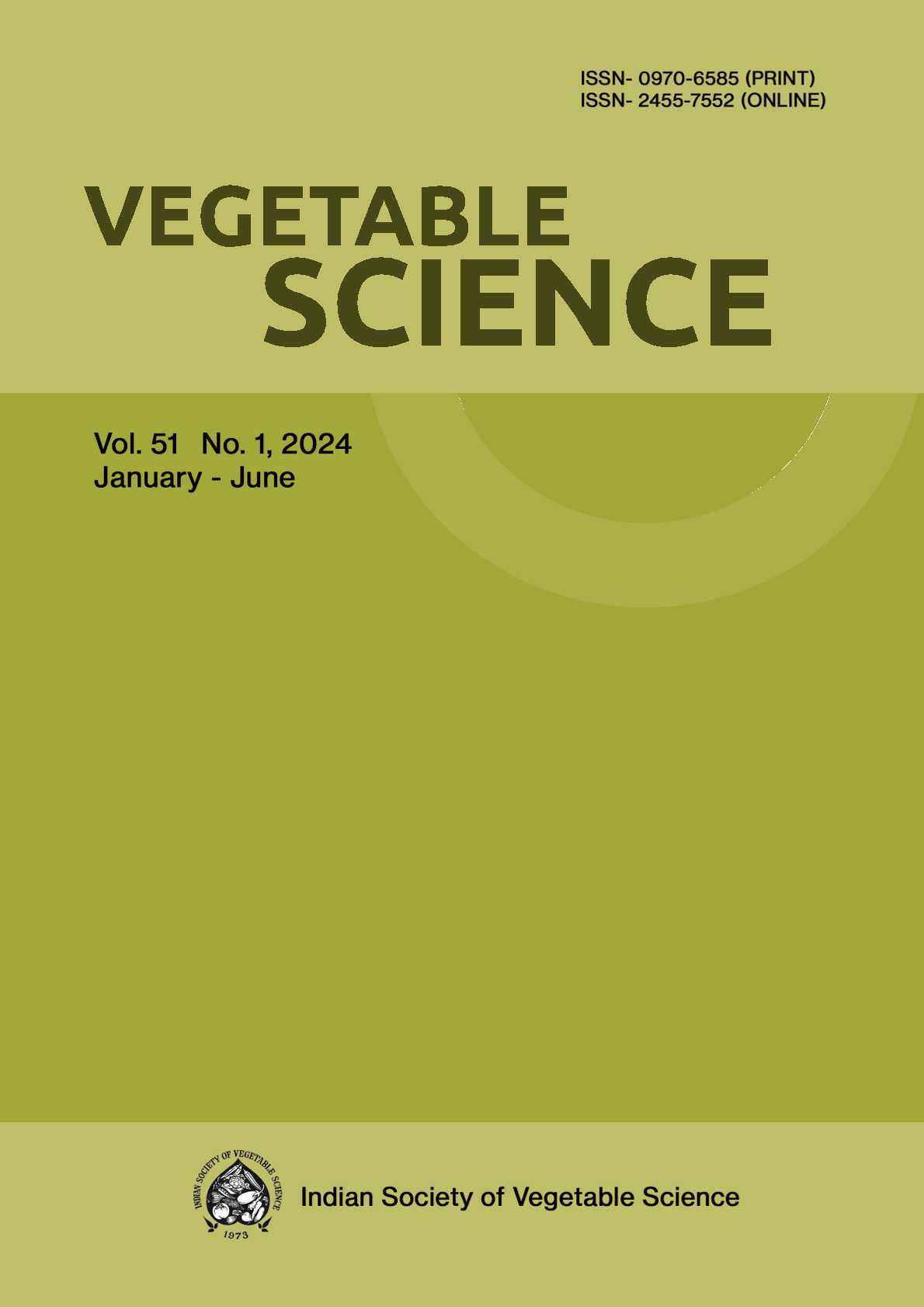Mining of resistance source for root-knot nematode (Meloidogyne incognita) in bitter gourd
DOI:
https://doi.org/10.61180/vegsci.2024.v51.i1.03Keywords:
Bitter gourd, genotypes, Meloidogyne incognita, , root gall index , screening, resistanceAbstract
Bitter gourd (Momordica charantia L.) is nutritionally and medicinally rich cucurbit crop and widely cultivated during summer and kharif season in India but suffer a lot with several biotic and abiotic stresses. Among biotic stresses, root-knot nematodes are one of the most damaging pests which cause 13.5% yield loss amounting to 252.82 million rupees annually. Use of resistant sources and development of new cultivars, is an eco-friendly approach to combat nematode incidence in this crop. In this endeavour, morphologically distinct twenty genotypes of M. charantia was screened against root-knot nematode (Meloidogyne incognita) by challenged inoculation of 2000 J2/kg of soil under screen house condition. The results revealed that, among twenty genotypes, two genotypes IC-44438 and IC-44428 were found resistant, three genotypes IC-212504, VRBTG-10 and VRBTG11-1 were moderately resistance and remaining were noted to be susceptible to M. incognita. The promising bitter gourd genotypes were again reconfirmed for their resistance against M. incognita by comparing with a susceptible check ‘Kalyanpur Baramasi’. Hence, the identified resistant genotypes i.e. IC-44438 and IC-44428 from the present study can serve as useful genetic material to plant breeders for developing root-knot nematode resistant bitter gourd varieties or hybrids to combat root knot nematode incidence in prone areas.
Downloads
Published
Issue
Section
License
Copyright (c) 2024 Manjunatha T Gowda, D. R. BHARDWAJ, Keshav K Gautam, P. M. Singh, Ashok K Singh (Author)

This work is licensed under a Creative Commons Attribution-NonCommercial-NoDerivatives 4.0 International License.






